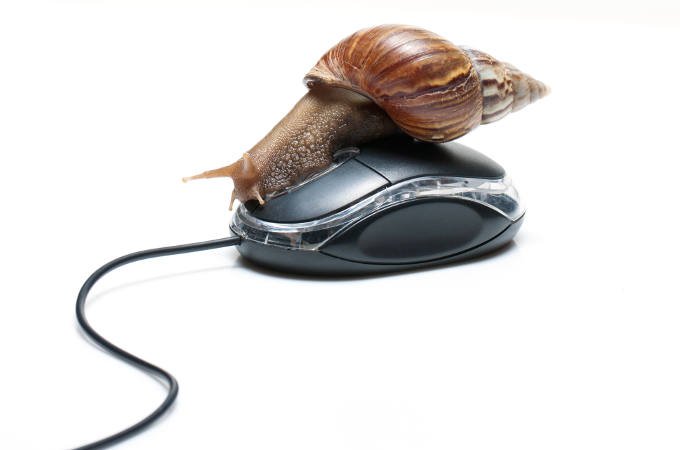Your website might have an amazing design, be well optimised for conversions and get good levels of traffic but there is one issue that could make all your hard work go to waste: your site speed is too slow.
The time it takes for your website to load is now one of the most important factors that affects how well it converts. With the industry focus having shifted firmly onto mobile search by users who have little patience and demand near instant search results, a load time of 5 seconds can result in up to 25% of your search traffic bouncing and going to one of your competitors instead.
And we don’t want that, do we?
The good news is that there are some pretty straightforward things you can do to speed up your website. However, before you start tinkering, it’s a good idea to benchmark your current load time first. There are many tools available to help you do this – we recommend using GTmetrix, Pingdom Tools or Google’s own tool PageSpeed Insights.
Once you have established your benchmark, take a look at these 4 simple ways of making the necessary improvements to your site. In our advice, we’ve focused mainly on WordPress websites but you should be able to implement these solutions on most websites.
1 – Get the right web hosting service
Let’s start with the basics. If your web hosting is poor, then frankly none of the tips mentioned below are going to make any difference. This is a key area to get right from day one – but what is ‘right’? There are so many different types of web hosting – shared hosting, reseller hosting, VPS hosting, dedicated hosting – with some services costing as little as 99p while others will set you back over £100 a month. Which to choose?
When it comes to hosting, the old adage ‘you get what you pay for’ couldn’t be more appropriate. Cheap 99p-type deals will most likely be on second-hand servers with thousands of other websites hosted alongside. While this may be sufficient for, say, a small blog that gets a handful of visits per month, higher traffic levels won’t be able to cope and your website will crash.
As an absolute minimum, a website that is used to advertise a service should be hosted on a VPS (virtual private server) to give you more control over the hosting. With ecommerce websites, it’s important that they’re hosted on a dedicated service designed to deal with large volumes of traffic and that is secure enough to handle payment transactions.
2 – Optimise your images for web
When a website is built, it is best practice to upload any images in the required size, i.e. the size that will actually be displayed on the site. However, this doesn’t always happen. Often, the developer will upload images in whatever size they’ve been supplied, perhaps scaling them to fit using CSS. This is far from ideal since large image files (1MB+) can seriously slow down your page load speed.
WordPress does a pretty good job at resizing, and of course there’s always Photoshop. In addition, there are a number of free online tools you can use to compress images, such as tinyjpg which allows you to upload up to 20 images at a time and gives you the optimised images as a download, ready to use on your site.
Also available are plug-ins such as wp-smushit but these won’t give you as much control as resizing manually, and if you’re not happy with the image quality you’ll have to restore a back-up and re-upload from scratch, which is neither user friendly nor time efficient.
3 – Implement browser caching
Caching is a way of telling your browser to store certain elements of the website, such as image and CSS files, so they don’t have to be loaded every time. Implementing this is probably one of the quickest ways to improve your site load time.
There are literally hundreds of WordPress plug-ins to help you do this, the most popular being W3 Total Cache. It works straight out the box and you can also tweak the settings to enable more advanced caching, such as minifying CSS and JavaScript.
Some servers offer settings such as gZip and other caching plug-ins, but these vary depending on the server type, operating system and web host. It is certainly worth contacting your host to ask about any additional settings they may be able to activate for you.
4 – Maintain your WordPress plug-ins
It should go without saying that any WordPress plug-ins that you use should be kept up to date at all times. No doubt you are aware that any failure to do so puts your website at risk of being hacked. But did you also know that old plug-ins using outdated scripts can lead to your site slowing down?
What’s more, unused plug-ins in WordPress will sometimes still load, and may use the database, even if they’ve been disabled. A by-product of this is that your site will take longer to load. Make sure that any plug-ins that you don’t use are completely deleted from the website.
At Artemis, we’ve been helping businesses to get the most out of their websites since 2004. From local campaigns for small companies through to global ecommerce sites for international brands, our capable SEO team is fully focused on achieving tangible, measurable results for each client. Why not get in touch to see what we can do for your website?
